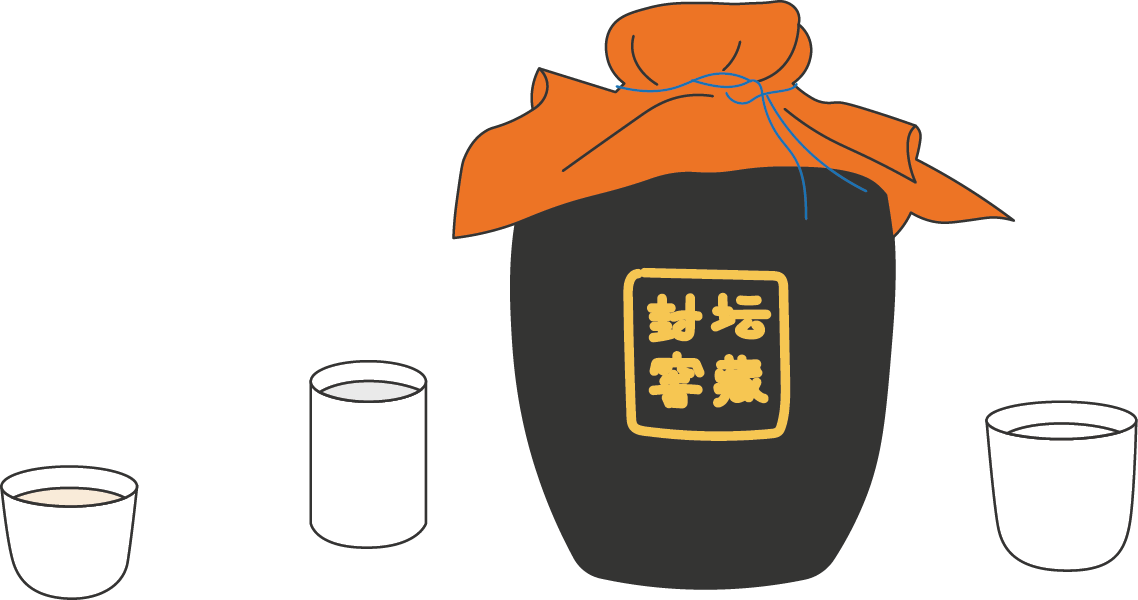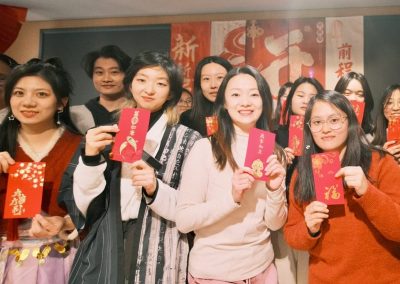Living in China, you’ve probably already had a chance to drink with your Chinese friends, colleagues, or classmates. Drinking is an integral part of Chinese alcohol culture, with a history spanning thousands of years.
How much do you know about Chinese drinking culture and traditions?
In this week’s post, we’ll explore key aspects of Chinese drinking habits, including alcohol types, drinking etiquette, and Chinese drinking tips for social drinking 🍶.

The ‘Alcohol’ Character in Chinese

酒
jiǔ
wine; spirits; liquor; alcoholic beverage
氵on the left, the “water” radical;
酉 on the right, “wine vessel”.
Quite descriptive, isn’t it?

葡萄酒
pútaojiǔ
wine

啤酒
píjiǔ
beer
Alcohol in China
01. Origins of 酒
A long time ago, Chinese people started making and consuming alcohol during ritual gatherings.
How long ago was it? Up to Chinese 9000 years ago!
Since it was way before any recorded history, this assumption came from extracted pottery. Researchers discovered early beers in China, made by the neolithic peoples of China from rice, honey, and grapes.
02. Evolution of 酒
Since then, alcohol has become a staple for Chinese families during family celebrations, ceremonies, to honor ancestors and gods, and for medical purposes. Some types of Chinese liquor are also used in cooking.
And of course, today, just like in most parts of the world, Chinese people drink alcohol to celebrate a memorable occasion, to socialize, or simply to complement a nice meal.

03. When Do People Drink?
In China, typically consumed with meals, like Baijiu (白酒) or Shaoxing wine (绍兴酒), which are enjoyed during lunch or dinner. It’s common to drink after eating to aid digestion, as Chinese believe alcohol complements food.
Toasts are an essential part of drinking culture, often offered to celebrate or show respect in family gatherings and social settings. Drinking during meals fosters camaraderie and strengthens relationships.
04. Hot or Cold?
Chinese 酒 (jiǔ) can be warmed up before drinking. Warming it up allows you to appreciate its aromas more, without losing too much alcohol. The temperatures vary based on the type of Chinese liquor (and your preferences), but the average is somewhere between 30 to 50 degrees Celsius.
05. Drinking Etiquette
Volumes have been written on Chinese dining and drinking etiquette. We’ve summarized some tips on our blog before. If you are drinking with Chinese business partners or colleagues, here are a few general tips to be aware of:
BEGINNING
It’s best not to start drinking on your own and wait for others to give a toast first.
TOASTING
If you wish to deliver a toast, do so while standing and holding a cup with both hands.
HOLDING THE GLASS
Make sure you hold your cup lower than the cup of your host. It’s a sign of respect and gratitude.
Common Types of Chinese Alcohol

米酒
mǐjiǔ
rice wine
黄酒
huángjiǔ
huangjiu; mulled rice wine
(lit. “yellow wine”)
白酒
báijiǔ
baijiu
(lit. “white wine”)
马奶酒
mǎnǎijiǔ
kumis
(lit. “horse milk wine”)
药酒
yàojiǔ
medicinal liquor; medicine wine
Of course, this list can go on and on! There are more regional types of 酒 (jiǔ), such as osmanthus-scented wine and Tibetan highland barley wine, as well as variations within each category.
A Little Less Conversation…
It’s much more interesting to try Chinese wine than to talk about it!
That is why we are so much looking forward to our next event — Chinese Wine Tasting night!
It’s going to be one of those perfect autumn nights when the weather’s getting chilly enough to warm ourselves up with a drink. We’re going to try 4 different types of Chinese wine, including some unique flavors.
For more details, visit the event page:









